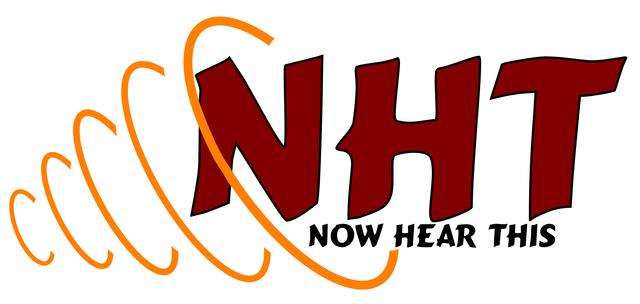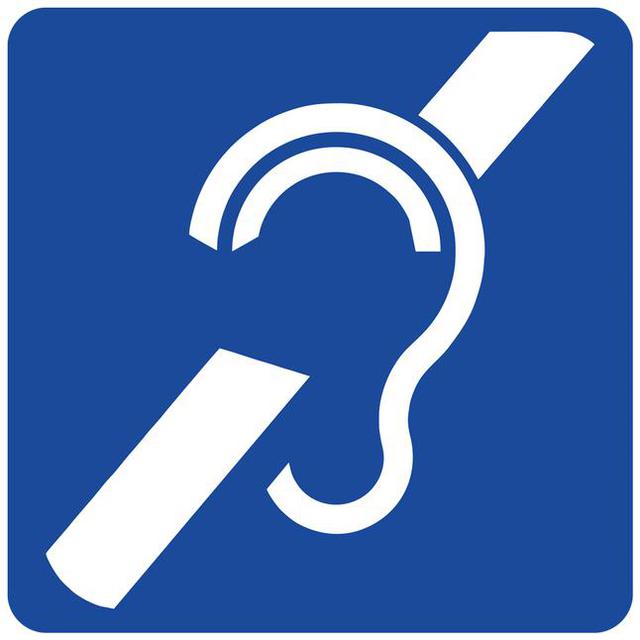ASSISTIVE LISTENING SYSTEMS
The Americans with Disabilities Act (ADA) stresses that people with hearing loss have the same right to hear well in places of assembly as people with normal hearing. If a venue has a public address system, a hearing aid-compatible assistive listening system (ALS) must also be available. If you have hearing loss, stay up-to-date on technological advancements and regulations in regard to these systems to ensure your access to sound in as many public places as possible.
AURACAST™ – This is a next-generation Bluetooth® audio broadcasting technology. Unlike traditional Bluetooth, which pairs one device to one receiver, Auracast enables a one-to-many audio experience. Like a radio station, it silently “streams” sound that can be received by compatible hearing aids, wireless earbuds or headphones, and various other receiving devices to which wired earbuds, headphones or neckloops can be attached. In some applications it needs an “assistant” such as a smartphone, to identify a stream and assist the receiving device to connect to it. It can broadcast multiple streams and the assistant would list them so that the user can select and then connect to the desired broadcast. In instances where there is only one stream being broadcast, some devices can connect without an assistant. Depending on the transmitter, an
Auracast stream can reach out to over 300 feet.
HEARING LOOPS – In its simplest form, a hearing loop is a discreetly hidden wire surrounding a seating area. When plugged into an amplifier that is connected to a PA system, the loop transmits the PA system sound as a silent electromagnetic signal that is received by wire coils called telecoils, which are found in about half of all hearing aids in use today. The hearing aid, with the telecoil turned on, will turn that signal back into sound. For hearing aids with two telecoil settings, one will receive and transmit the sound both from the telecoil, and the device's microphone, into the ear. The second setting will be telecoil only, eliminating background sound that would be picked up by the microphone. Like hearing aids, cochlear implant (CI) processors have a built in telecoils and function just like hearing aids do in relaying sound to the inner ear.
Some people with hearing aids that do not contain telecoils can still connect to a hearing loop if they have a multi-purpose remote microphone. Such mics have a built in telecoil and the device will connect to the loop signal and then relay it to the user's hearing aids via Bluetooth®. People without telecoil equipped hearing, aid and no dual-purpose remote mic can be provided with a “loop receiver” that picks up the transmission from the hearing loop and transmits it to the user's ears via a headset of some sort.
Sound from a hearing loop is mostly confined within the looped area but there is some “bleed” where the sound can be connected to outside of the loop. If the loop is installed in a properly designed grid pattern (called a phased array), all of the sound is contained within the boundary of the loop. Such a pattern can be designed to effectively serve almost any size area.
IR SYSTEMS. Also known as Infrared systems, IR systems transmit sound via invisible light beams that are converted into sound by using a borrowed receiver with earphones or a neckloop. To meet the ADA hearing aid compatibility mandate, all RF systems installed, or significantly upgraded since 2012, pair 25 percent of receivers with neckloops instead of earphones. When plugged into the receiver, the neckloop becomes a miniature hearing loop, transmitting sound electromagnetically to hearing aid telecoils.
The beams of an IR system will not penetrate walls so such systems, like a phased array loop, offer some degree of privacy in their operation. This can present some problems in using the system as people's heads or posts inside of a meeting area will block the sound to anyone behind that person or post. The signal from an IR transmitter will travel 30 to 60 feet, depending on the strength of the transmitter. Additional transmitters can be placed30 feet from the first one to extend the range of the signal.
RF SYSTEMS. Radio Frequency (RF) systems, also known as FM systems, are the most common ALS technology in this country. Recently, hearing loops became a prominent alternative. Receivers are loaned to users of these systems by the venue, and, like a miniature radio, the receiver captures the radio signal and sends it to the user’s ears via the earphones or neckloop. To meet the ADA hearing aid compatibility mandate, all RF systems installed, or significantly upgraded since 2012, pair 25 percent of receivers with neckloops instead of earphones. When plugged into the receiver, the neckloop becomes a miniature hearing loop, transmitting sound electromagnetically to hearing aid or CI telecoils.
Unlike IR systems, the signal of a typical FM system will reach out to as much as 500 feet but can, with some additions, be made to go out 1,000 feet or more
WiFi AUDIO SYSTEMS. WiFi Audio streaming delivers sound through an existing WiFi network to smartphones or tablets via an appropriate app. There are, again, receivers available to be loaned by venues so these systems also meet the ADA standards for an ALS. In some instances, loaner receivers may not be available so those systems are not ADA compliant and require the user to employ a personal device such as a smartphone, to access the signal.
This technology is popular in such settings as sports bars where multiple TV sets will be in operation, each with a different competition running on it. Users can download an app into their phone that will enable them to connect to the WiFi system with their smart phones to pick the contest they wish to follow. They then connect to the sound for that TV. They are also popular in gyms where TVs may be suspended over exercise machines and viewers are able to choose which to connect to. It's not a problem when the TV sound is not turned on, but, If not properly installed, when used as an ALS, these systems may have mild to annoying latency (an echo effect).
USE OF ALSs
A recent survey* found that hearing aid users are six times more likely to use a hearing loop system than otherr ALS options in a public venue because it eliminates the need to borrow and return devices and remove their hearing aids to access the system. It also eliminates any hygienic concern over using borrowed devices. Furthermore, user’s hearing aids customize the sound to match the pattern of their audiogram—something earphones cannot do. Beyond the benefits unique to hearing loop systems, any ALS separates sounds that users want to hear, such as speech from background noise. By using earphones or turning off their hearing aid mics, users eliminate much of the reverberation, ventilation hum, and other sounds that may interfere with their ability to discern words, improving the speech-to-noise ratio.
*NOTE – The survey was conducted before the availability of Auracast systems. They would offer the same benefits that were previously attributed only to hearing loops.
HOW DO I FIND AND ACCESS AN ALS?
The ADA requires the placement of ALS signage (this blue international symbol) in venues with
an available system. Look for the symbol at performing arts halls, transportation hubs, legislative
chambers, and any place where people assemble that uses a PA system. If there is the letter
T in the lower right hand corner of the sign, the systems is a hearing loop. It's possible, it the
system in Auracast™ that there will be an A in the spot.
If the type of system is not clear when you see this sign, inquire at the box office or information desk about the type of system available. If a hearing loop is available and you have telecoils, simply turn them on. You can also borrow a small telecoil equipped receiver and earphones to access the loop. If an RF or IR is available, borrow a receiver and earphones or a neckloop. If it's a WiFi system, you may be able to connect to it using your smartphone. Otherwise, borrow a receiver and earphones or a neckloop. Venues with RF or IR systems must offer users the choice of earphones or a neckloop.
Places of worship are the No. 1 location with ALSs but, because the ADA does not usually apply to these venues, you may not see any signage. Ask an official if an assistive listening system is available.

